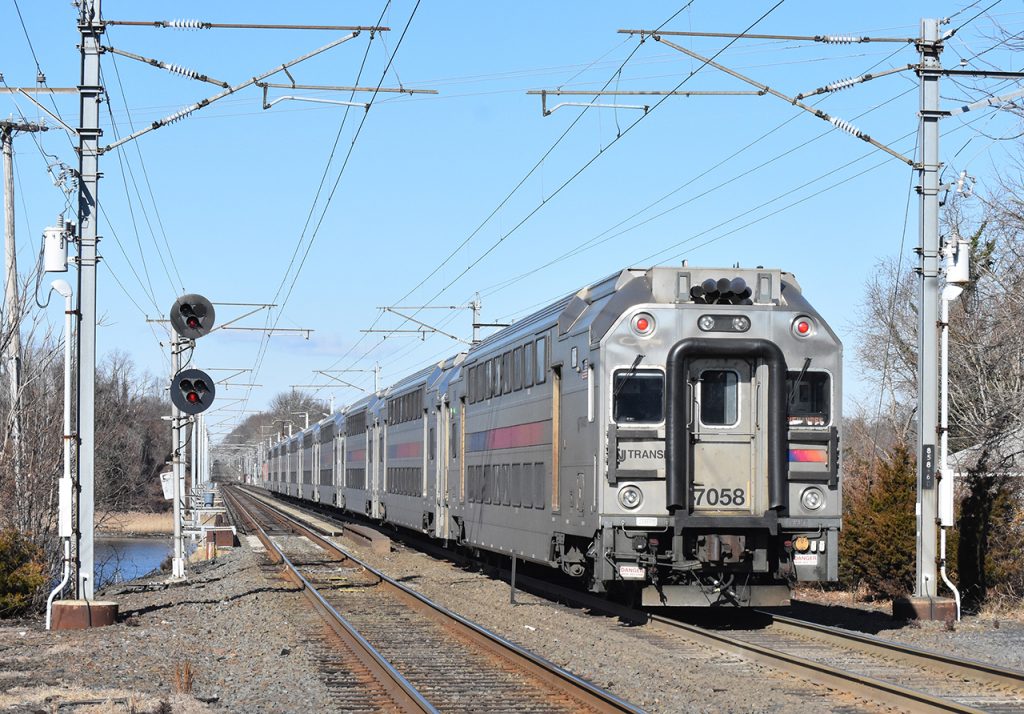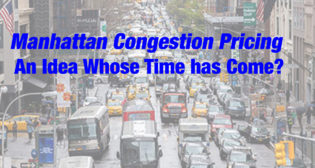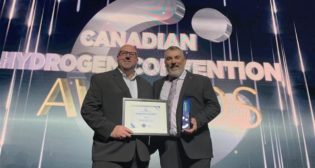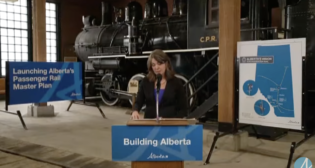
Out of Crisis Mode, Ahead of the Curve
Written by William C. Vantuono, Editor-in-Chief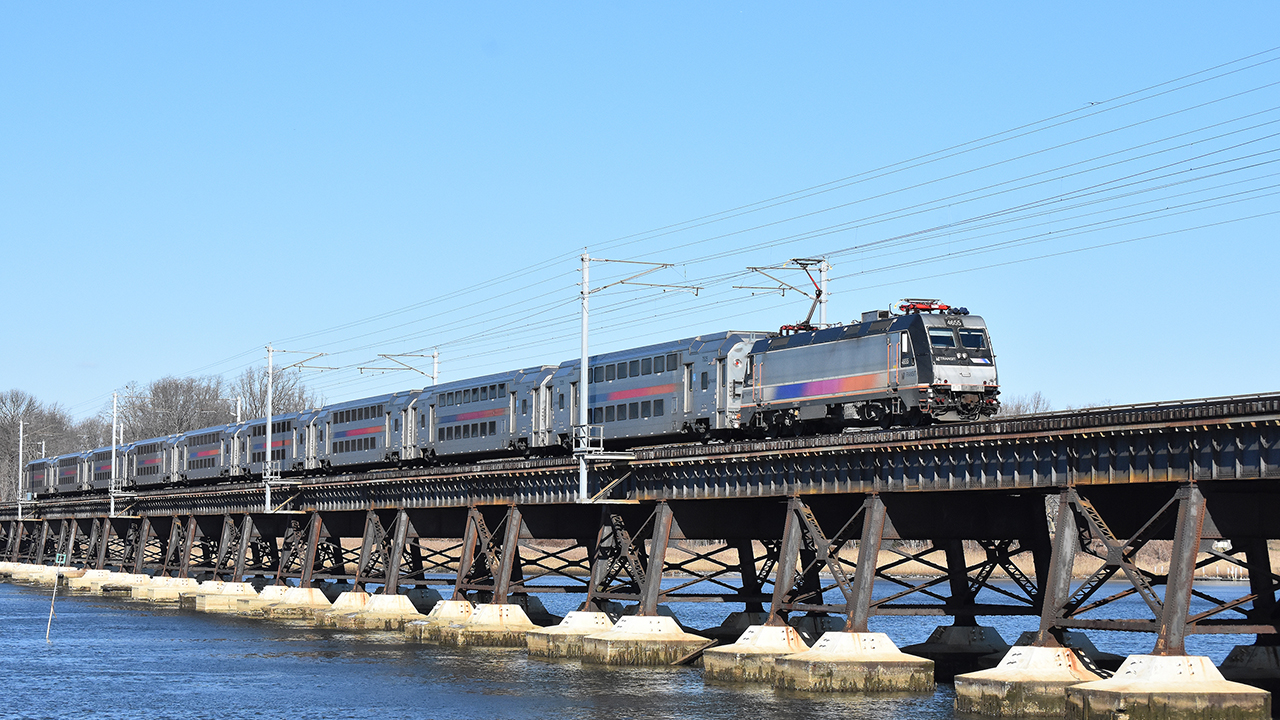
Westbound NJT North Jersey Coast Line train 3231—nine MultiLevels hauled by an ALP46 electric—crosses the Navesink River Bridge, prior to stopping at Red Bank station. William C. Vantuono photo.
RAILWAY AGE, FEBRUARY 2022 ISSUE: Coming out of a crippling pandemic, sustainable long-term funding, critical for essential capital projects, appears within reach for New Jersey Transit.
New Jersey Transit is among North America’s largest providers of rail transit, with an extensive regional/commuter and light rail network and annual operating and capital budgets approaching that of a Class I railroad.
NJT’s commuter rail system is an amalgamation of many different railroads going way back—the Central Railroad of New Jersey, Pennsylvania Railroad, Penn Central, Lehigh Valley, Erie-Lackawanna, DL&W and Erie before their merger, even Conrail. And even though the system has been integrated over the years, still there are a lot of structural and physical elements that are characteristic of those fallen flags. On the equipment side, the long-term plan is to standardize the commuter rail fleet to the Bombardier (now Alstom) MultiLevel.
NJT President and CEO Kevin Corbett discussed the agency’s current operations, its priority capital projects, and how it intends to leverage funding made available through the Infrastructure Investment and Jobs Act (IIJA) with Railway Age Editor-in-Chief William C. Vantuono.

RAILWAY AGE: We thought we were coming out of the pandemic, but we’re not quite there yet. How is that impacting New Jersey Transit staffing?
KEVIN CORBETT: Omicron certainly threw a punch in the gut that we didn’t need, nationally, but for us, ridership fell drastically between December 21 and 23—a throwback; it was almost like March 2020. It was unfortunate with Christmas in New York. But we’re out of crisis mode at NJT and that’s a nice feeling for us, to be able to be ahead of the curve or at least on top of things. We’d staffed up, with all the engineers’ classes. So although our numbers were impacted pretty significantly on train crews and engineers, we had a deep enough bench that we could handle that. We still ran 97% of our regular service through the worst days of Omicron because we had that bench. We didn’t have to look at suspending service or going back to enhanced holiday service.
RA: The Infrastructure Investment and Jobs Act (IIJA): What does it mean for a statewide agency like New Jersey Transit?
CORBETT: Being direct about it, we’re certainly happy. I think there are a couple areas where I see it can be a game-changer. But on formula funding, there’s still a lot to be determined. I think the jury’s still out on a lot of it for transit agencies. We’re obviously excited, but for our formula funding, we’re possibly getting another half-billion. We are assuming our normal formula funding would be at $4 billion over five years, so it gives us an extra $110 million per year, which is great to have. We want to have the base nailed down, as well as get a significant bump-up of $110 million a year. But it’s not like, people think oh, you’re getting billions and billions of dollars. It’s going to be competitively bid, but we’re pretty confident. We have a five-year capital plan that we’re in the process of updating. We have needs, projects in the pipeline that we don’t have funding for yet. The question is, will that match up with what FTA and FRA put out in grants? We have very good relationships with Amit Bose at FRA and Nuria Fernandez at FTA. We expect to have projects in the pipeline, but the devil is in the details. With the USDOT—I’m working with them as Co-Chair of the Northeast Corridor Commission—there are harmonization efforts, where FTA and FRA policies conflict. Some are legislative, some are administrative. We’re working with them to try to make things as easy as possible, but it’s still not clear. With FRA state programs, for example, you have to have an element that’s intercity or freight. Some projects we have don’t fit into that, at least not easily. You try to find a hook, and I think other transit agencies are looking for the same thing. But I would say overall, it’s very positive, but when you get down to the details of projects for which we’re going to be eligible, that’s still to be determined, and I expect it to be very competitive.

RA: What are some of the priority capital projects, the big-ticket items, funding-dependent, of course?
CORBETT: Portal Bridge [on the Northeast Corridor] is the biggest project in New Jersey Transit’s history. We’re gearing up, getting the Notice To Proceed out. We’ve got the contract signed, and you’ll be seeing construction starting soon on that. Amtrak is getting $66 billion in IIJA funding. A lot of that’s going to go in the Northeast Corridor. We’re looking at projects along the NEC with Amtrak, how we’re going to sequence them. That’s going to be an interesting discussion about whose projects get moving first along the NEC, and whose operations are going to be impacted. That’s another thing to watch going forward. But for us, otherwise, leaving the Northeast Corridor aside, we have a lot of station work to do. We did a baseline assessment, and we have a backlog of 100-plus stations that need anywhere from modest repairs to major rebuilding to new construction. Newark Penn Station is a perfect example of that. Looking at the capital plan, breaking it into two components, one is equipment. We’ve exercised the option with Alstom for an additional 25 MultiLevels, in addition to the 113 that are under way right now. We started looking at options at phasing out the [single-level] Comet cars. To the degree that we have funding, about which we’re optimistic, we’ll be able to exercise more options to start replacing them. We’re really trying to bundle stations and bridges together to be able to take advantage of standardization. We need a lot of electrical upgrades. Some of our electric-traction substations are ancient. We’re working in collaboration with PSE&G on taking back some of them, even bundling a number of them, to get the 40- and 50-year-old-plus electrical infrastructure in them upgraded.
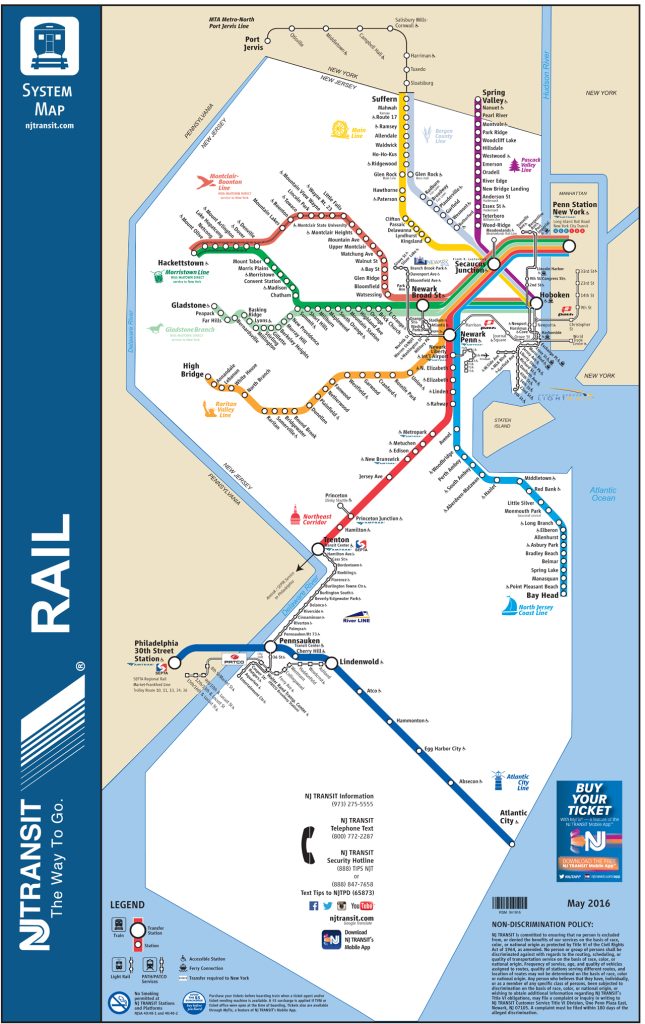
RA: Where does procurement of the MultiLevel III, the self-powered railcar, stand?
CORBETT: They’re coming along. We’re going to have delays, there’s no doubt about it, in delivery because of supply chain issues. We have many. Components like truck castings come from all over the world. Alstom is working collaboratively with us. But as far as the summer of 2023, when we were supposed start taking delivery, that’s going to slip into 2024. We’re working with Alstom to see what we can do to make up schedule. That disruption is hitting everyone. But price is a good thing. With Alstom, we’re able to maintain the price. It’s just the delivery time lagging. But we’re excited about them. The whole MU concept for MultiLevels really will be a game-changer for us. And we are taking delivery on more dual powers, the ALP45-DP. We love them. They give us so much flexibility.

RA: What’s your longer-term outlook?
CORBETT: I’m concerned with the outer years, after the next couple of years. Right now, thank God for CARES and the other federal funding we’re getting. But after two or three years from now where we start looking down the line, where will that pipeline be, both from the state and the federal government, that sustainable funding we need? When you get these big bumps, it’s great but then you go back down in the trough for another decade. Hopefully, we can avoid that. What does that mean for equipment, prices as well as construction? As far as delivery times and prices going up, we see inflationary issues—we and everybody else in the transportation industry.

RA: Other than major infrastructure projects and rolling stock, what are NJT’s capital priorities?
CORBETT: We really spend a lot of time on Information Technology. Our executive team just had a meeting going through all the different technologies that are now built into all the equipment. But a lot of it is siloed. You’re going to have four or five different computer systems that don’t talk to each other on a train, different built-in elements that are mostly stand alone. We have started looking into enterprise asset management and life cycle costs and how to get all the continuous operational data. It’s called Information Technology, IT, but we’re really focusing a lot on OT, Operational Technology. I’m learning a lot of things as quickly as I can, because I really see smart investment in operational technology allowing us to manage our operations, our expenditures in a lot of ways that really will transform places like the MMC (Meadows Maintenance Complex), how we run that place. It may sound a bit dry, but boy, I think that’s going to be probably the most critical thing in the next few years.
RA: For a younger generation of people in our industry, this is exciting stuff. These are the kinds of things that they’ve come to take for granted, all the software platforms, information technology and artificial intelligence. And our industry has made great progress in getting up to speed. That’s not an easy thing to say about railroads, as you well know.
CORBETT: We’ve made a lot of progress in the past few years here. Collectively, we’re all proud of it. We’re rated in Forbes as one of the 25 best companies to work for in New Jersey. That’s not something you buy with advertising. So we really feel a lot of pride. There are a lot of bright young people coming in here. You talk to some of the train crews, some of the ones who aren’t even old timers, but have been 15 years with the railroad, and they’re saying, in a positive way, wow, we have all these new people, new engineers, new train crews. It’s a different camaraderie. It feels different. That’s great. But in technology, we’re still behind. If you take the 50 major transit agencies in the country, we are not one of the top five in technology. We’re making investments, and hopefully we’ll be able to leapfrog a bit. On the IT side, we’re really trying to invest and get caught up with the rest of the world. We’re sharing our IT people with agencies in places like Singapore, Toronto and Europe, comparing what they’re doing. I’m the North American rep for the UITP. We’ve been active over the past year and have really increased our participation. I was elected the North American rep to the Board there. And we’ve been participating, getting involved in a lot of great information sharing. I think in that sense, it was making the lemonade out of lemons with COVID. That really helped the North American transit community to be more aware of what’s going on in the world. In a lot of ways, we are different, but there are a lot of common things, how to respond, following each other’s data, how we’re dealing with sanitization, labor issues, fare collection issues, all those kinds of things. I think COVID really helped accelerate that cooperation between APTA and UITP. There has been collaboration and cooperation between APTA and UITP for that kind of sharing, which on the technology side has been helpful.
In his State of the State address following election to a second term, New Jersey Governor Phil Murphy—astute politician that he is—said that, four years ago, NJ Transit “was national model of how not to run a transit system. Now it’s a national model of how to turn one around.”
Kevin Corbett and the people at NJT can take credit for that. “I’ve got a pretty good gig here right now,” he says. There’s much more work to be done. The prospects for the level of funding that will be required are looking up.
